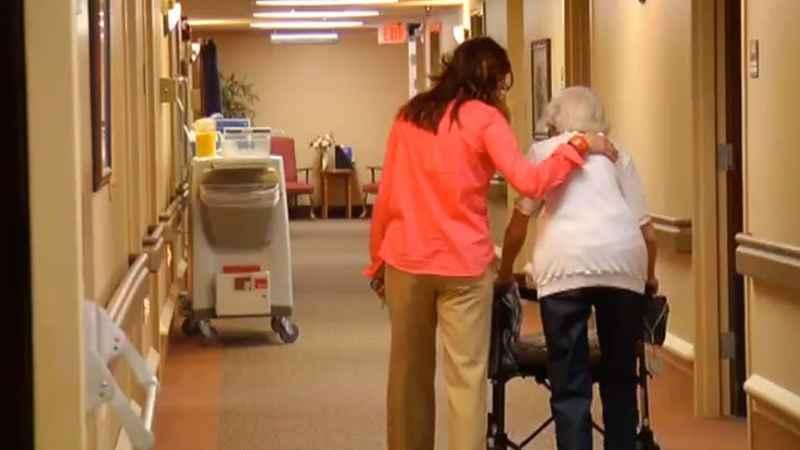Nursing homes in Minnesota vigilant as omicron cases rise
[anvplayer video=”5083975″ station=”998122″]
Minnesota nursing homes are being very cautious during the surge of omicron.
The now-dominant COVID-19 variant has proved to be very contagious as cases, breakthrough cases and deaths spike across the country.
The Centers for Disease Control and Prevention recently shared grim numbers about how the variant is impacting nursing homes nationwide.
During the first full week of 2022, 32,000 cases of COVID-19 were reported in nursing homes. That’s seven times as many as a month before, according to the CDC. Also during that week, deaths due to COVID-19 increased 47% inside nursing homes.
While those numbers are not ideal, nursing homes and assisted living facilities in Minnesota are in a much better place than a year ago.

[KSTP]
According to the Minnesota Department of Health, there was an increase in cases inside congregate care settings the week after Christmas, but MDH data shows a decrease in cases the following week.
That same data shows a sharp decrease from the same time period in 2020. Health officials are crediting protocols, vaccines and boosters for that.
"Because our residents were so vulnerable, we’ve had to be very careful and be very diligent about the things that we do to try to protect them," said Kari Everson, vice president of clinical practices and nurse consultant with Leading Age Minnesota.
Leading Age Minnesota has hundreds of members that work in hundreds of nursing homes and long-term care facilities across the state.
"We help people who care for older adults do their jobs most efficiently and effectively as they can," Everson said.
She said while Minnesota is in a better spot than the national numbers mentioned, some facilities are increasing testing, doubling down on protocols and are continuing to advocate for people to get the vaccine.
But the omicron variant is so contagious that breakthrough cases have been more common than during the spikes with other variants. KSTP medical expert Dr. Archelle Georgiou says this is important to remember when it comes to our older population.
"Individuals who are in nursing homes are at risk — because of their age, because of their comorbidities, but also because they’re in a congregate living setting," Georgiou said. "[Omicron] is so infectious, they are at higher risk because of just the living situation that they’re in."
Georgiou also mentioned that while Minnesota nursing homes are experiencing the benefits of booster shots, people in those facilities were some of the first to get a booster.
"We do know that a little bit of that protection is now waning because we’re a few months out. So, that could be another factor [as to why] we’re seeing things spike," Georgiou said.